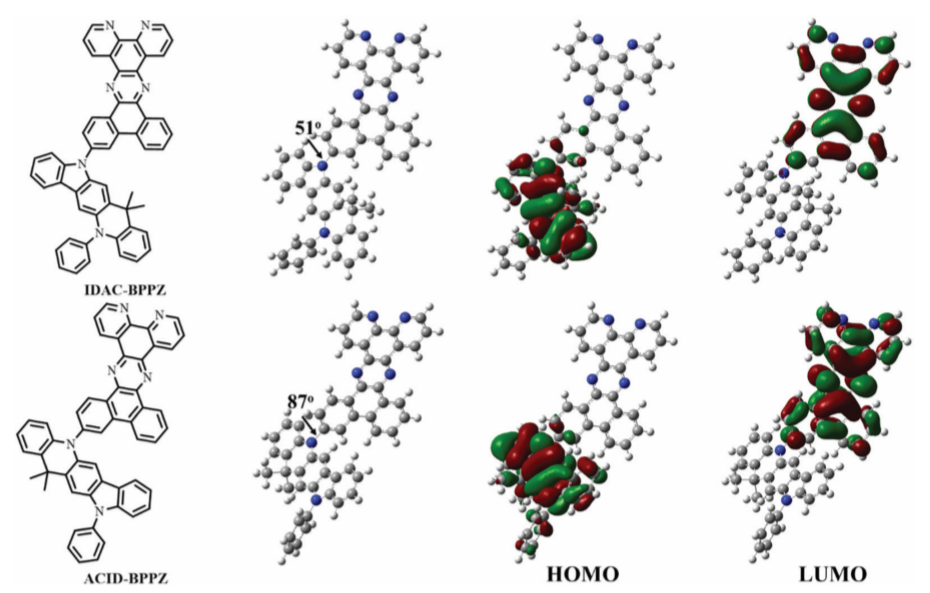Abstract:
Energy differences (ΔESTs) between the lowest singlet and triplet excited states as well as the oscillator strengths (fs) are two contradictory factors controlling performance of thermally activated delayed fluorescence (TADF) emitters. To figure out their optimum balance, we developed two orange–red isomeric TADF emitters 12-(13,13-dimethyl-5-phenyl-5,13-dihydro-11H-indolo[2,3-b]acridin-11-yl)dibenzo[a,c]dipyrido[3,2-h:2′,3′-j]phenazine (IDAC–BPPZ) and 12-(13,13-dimethyl-11-phenyl-11,13-dihydro-5H-indolo[2,3-b]acridin-5-yl)dibenzo[a,c]dipyrido[3,2-h:2′,3′-j]phenazine (ACID–BPPZ), which are constructed with the same electron-donor (D) and the same electron-acceptor (A) cores via different connecting sites. ACID–BPPZ has a weaker D–A conjugation and realizes an extremely small ΔEST of 0.02 eV, but its f is also very small (0.001). These factors are better compromised in IDAC–BPPZ which has a more conjugated D–A connections. This successfully realizes a much higher f of 0.068 and a reasonably small ΔEST of 0.07 eV. As a result, the orange–red OLEDs using IDAC–BPPZ as emitter achieve a maximum external quantum efficiency 18.3% comparing to that of 14.7% in the ACID–BPPZ-based device. The results suggest that a balance between ΔEST and f is important for developing high performance TADF emitters.
链接:https://pubs.rsc.org/en/content/articlelanding/2019/tc/c8tc06081a#!divAbstract






